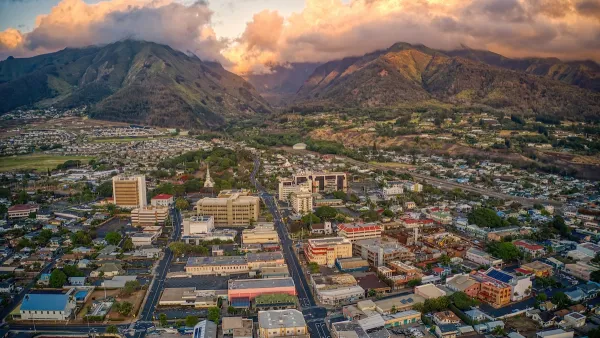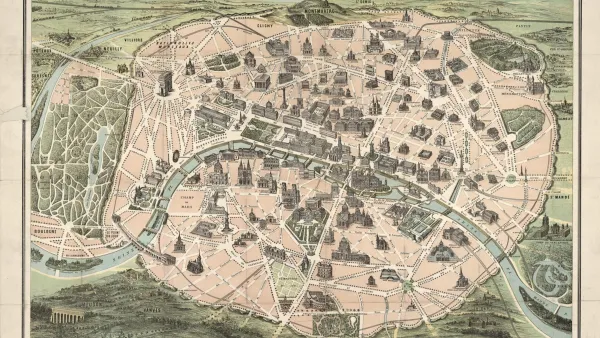With $40 billion dollars of bond money for transportation, housing and parks at his disposal, Governor Schwarzenegger could reshape the state's growth patterns and make good on his promises to reduce greenhouse gases, argues William Fulton.
"Few governors have been in as powerful -- and enviable -- a position to shape California's future growth as Arnold Schwarzenegger. He is the most popular governor since Earl Warren and has more money to spend on rebuilding projects than anyone since Pat Brown, thanks to last year's passage of $40 billion in bond measures.
The governor also has a bold environmental plan to reduce greenhouse gas emissions in the state by 25% over the next 13 years. But, as his advisors acknowledge, Schwarzenegger cannot meet this target without rethinking the ways in which California grows. Fortunately, the bond money opens up unique opportunities for him to steer development in new directions. If he fails to capitalize on this chance to re-imagine California's growth, Schwarzenegger won't reach his greenhouse gas goal - and the state's future prosperity will be threatened.
The landmark climate change bill passed in September and signed by Schwarzenegger should be the foundation of a new vision. But that vision should go far beyond simply ramping up recycling and driving cleaner cars on the so-called hydrogen highway. It also should include ideas on how to level off the amount of driving in California. Among other things, that means building more affordable housing closer to where people work. That would increase densities in many urban areas, but, if done correctly, it also would help multiply travel options - rail, bus and foot - and lower the overall time people spend in their cars."
FULL STORY: Schwarzenegger's golden opportunity

Maui's Vacation Rental Debate Turns Ugly
Verbal attacks, misinformation campaigns and fistfights plague a high-stakes debate to convert thousands of vacation rentals into long-term housing.

Planetizen Federal Action Tracker
A weekly monitor of how Trump’s orders and actions are impacting planners and planning in America.

In Urban Planning, AI Prompting Could be the New Design Thinking
Creativity has long been key to great urban design. What if we see AI as our new creative partner?

Massachusetts Budget Helps Close MBTA Budget Gap
The budget signed by Gov. Maura Healey includes $470 million in MBTA funding for the next fiscal year.

Milwaukee Launches Vision Zero Plan
Seven years after the city signed its Complete Streets Policy, the city is doubling down on its efforts to eliminate traffic deaths.

Portland Raises Parking Fees to Pay for Street Maintenance
The city is struggling to bridge a massive budget gap at the Bureau of Transportation, which largely depleted its reserves during the Civd-19 pandemic.
Urban Design for Planners 1: Software Tools
This six-course series explores essential urban design concepts using open source software and equips planners with the tools they need to participate fully in the urban design process.
Planning for Universal Design
Learn the tools for implementing Universal Design in planning regulations.
Gallatin County Department of Planning & Community Development
Heyer Gruel & Associates PA
JM Goldson LLC
City of Camden Redevelopment Agency
City of Astoria
Transportation Research & Education Center (TREC) at Portland State University
Jefferson Parish Government
Camden Redevelopment Agency
City of Claremont


























